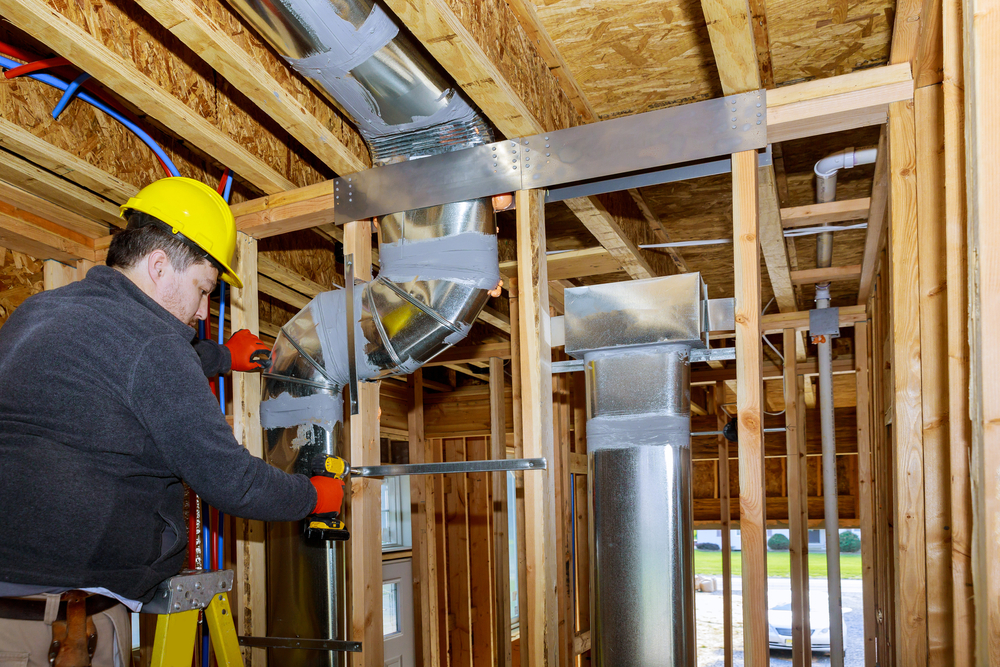Fiberglass Insulation:
Fiberglass insulation is one of the most popular choices for duct insulation due to its affordability and effectiveness. It consists of fine glass fibers that are woven together to create a dense, insulating material. Fiberglass insulation is available in various forms, including rolls, batts, and rigid boards, making it versatile for different duct configurations. Additionally, fiberglass insulation has excellent thermal properties, helping to reduce heat transfer and maintain consistent indoor temperatures.
Foam Board Insulation:
Foam board insulation, also known as rigid foam insulation, is another widely used option for duct insulation. It is made from polystyrene or polyurethane foam and is available in pre-cut panels or sheets. Foam board insulation offers high thermal resistance, making it effective at preventing heat loss or gain within ductwork. Its rigid structure also provides added durability and protection against moisture, mold, and pests. Foam board insulation is relatively easy to install and can be cut to fit specific duct sizes, ensuring a snug and efficient seal.
Reflective Insulation:
Reflective insulation, also referred to as radiant barrier insulation, works by reflecting heat away from the ductwork rather than absorbing it. It typically consists of a layer of reflective foil or film sandwiched between layers of fiberglass or foam insulation. Reflective insulation is particularly beneficial in hot climates where minimizing heat gain is essential for maintaining indoor comfort. By reducing radiant heat transfer, reflective insulation helps improve the overall energy efficiency of your air conditioning system, resulting in lower cooling costs and enhanced comfort levels.
Aerogel Insulation:
Aerogel insulation is a cutting-edge solution that offers superior thermal performance in a lightweight and space-efficient package. Aerogels are nanoporous materials composed of silica aerogel particles suspended in a matrix, resulting in an ultra-lightweight and highly insulating material. Aerogel insulation is incredibly effective at reducing heat transfer, making it ideal for applications where space is limited or where maximum insulation performance is required. While aerogel insulation tends to be more expensive than traditional options, its exceptional thermal properties can lead to long-term energy savings and improved comfort.
Spray Foam Insulation:
Spray foam insulation is a versatile option that provides seamless coverage and superior thermal performance. It is applied as a liquid foam that expands to fill gaps, cracks, and irregular shapes within ductwork, creating a tight and effective seal. Spray foam insulation offers excellent insulation properties, effectively reducing heat transfer and air leakage for enhanced energy efficiency. Its ability to conform to any duct configuration makes it ideal for both new installations and retrofit projects. Additionally, spray foam insulation helps minimize moisture infiltration and prevents the growth of mold and mildew within duct systems, promoting healthier indoor air quality.
Phenolic Foam Insulation:
Phenolic foam insulation is a high-performance material known for its exceptional thermal properties and fire resistance. It is made from phenol-formaldehyde resin and is typically manufactured as rigid boards or panels. Phenolic foam insulation offers superior insulation efficiency compared to traditional materials, allowing for thinner insulation thicknesses while maintaining optimal thermal resistance. Its low thermal conductivity helps minimize heat loss or gain within ductwork, resulting in improved energy efficiency and lower operating costs. Phenolic foam insulation is also non-combustible, making it a safe and durable choice for residential duct applications.
Polyethylene Foam Insulation:
Polyethylene foam insulation is a lightweight and flexible option that provides reliable thermal insulation for ductwork. It is made from closed-cell polyethylene foam, which offers excellent resistance to heat transfer and moisture absorption. Polyethylene foam insulation is available in rolls or sheets and can be easily installed by wrapping around ductwork or lining the interior surfaces. Its closed-cell structure prevents condensation buildup and helps maintain consistent temperatures within the duct system. Polyethylene foam insulation is also resistant to mold, mildew, and corrosion, ensuring long-lasting performance and durability in various environmental conditions.
Ceramic Fiber Insulation:
Ceramic fiber insulation is a high-temperature insulation material designed for applications where extreme heat resistance is required. It is composed of alumina-silica fibers that offer exceptional thermal stability and resistance to thermal shock. Ceramic fiber insulation is commonly used in industrial and commercial settings, but it can also be adapted for residential ductwork exposed to high temperatures. It provides effective insulation against radiant heat transfer and can withstand temperatures exceeding 2000°F (1093°C). Ceramic fiber insulation is available in various forms, including blankets, boards, and papers, allowing for customized solutions to suit specific duct insulation needs.
Recycled Cotton Insulation:
Recycled cotton insulation, also known as denim insulation, is an eco-friendly alternative made from recycled denim jeans and other textile waste. It offers excellent thermal performance while diverting materials from landfills and reducing the need for virgin resources. Recycled cotton insulation is available in batts or rolls and is easy to install in ductwork, providing effective thermal insulation and sound dampening properties. It is free from harmful chemicals and irritants, making it safe for indoor air quality. Additionally, recycled cotton insulation has a low environmental impact and can contribute to LEED certification and other green building standards.
Soundproofing Insulation:
Soundproofing insulation is designed to minimize noise transmission within ductwork, creating a quieter and more comfortable indoor environment. It consists of dense materials, such as mineral wool or fiberglass, engineered to absorb sound waves and reduce airborne noise. Soundproofing insulation is particularly beneficial in homes where noisy ductwork disrupts daily activities or disturbs occupants’ sleep. By installing soundproofing insulation, homeowners can enjoy peace and quiet while maintaining efficient cooling performance. Additionally, soundproofing insulation can help improve privacy by reducing sound transfer between rooms and floors, enhancing overall living comfort.

